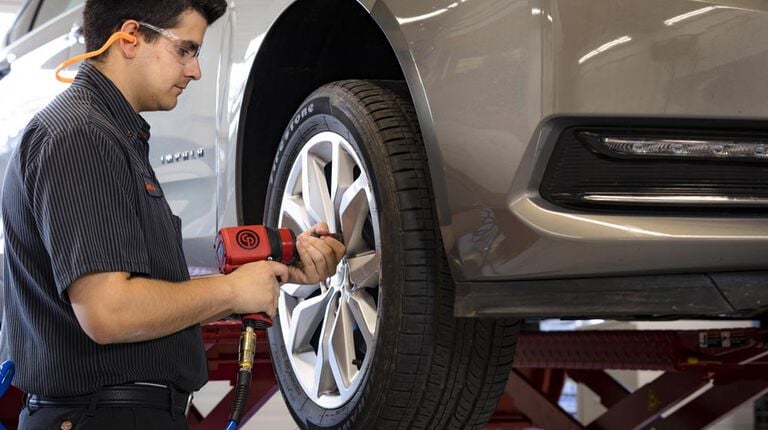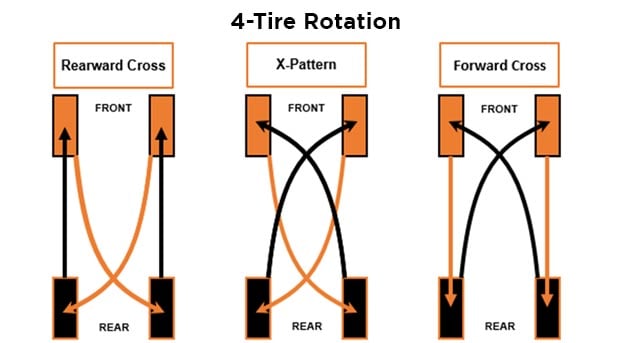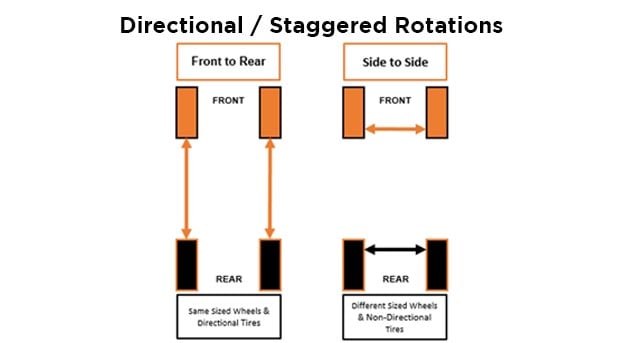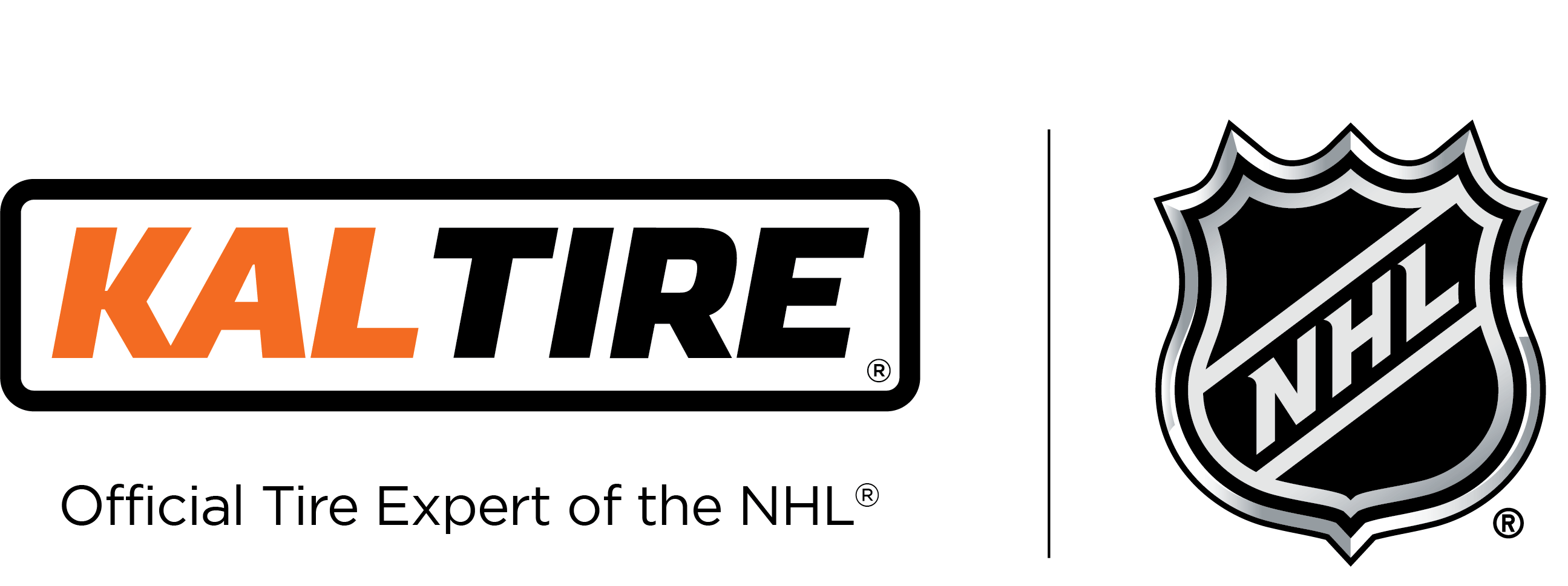When to rotate your tires and why

When you rotate your tires properly and regularly, you prolong the life of your tires. It’s a simple yet effective tire maintenance step that can easily pair up with your other vehicle maintenance tasks. You can schedule you tire rotation appointment online when it is convenient for you and then this task won't be forgotten.
How often you rotate your tires will depend on several factors:
- The amount of mileage you rack up on the odometer in a year
- The type of tires you have mounted on your vehicle
- Your driving habits
- The mechanical condition of your vehicle
When should you rotate tires?
Most drivers should rotate their tires approximately every 8,000 kilometres. Some people like to do their tire rotations along with every other oil change.
In parts of Canada where drivers ride on winter for half of the year, the semi-annual winter tire changes are also an ideal time for a tire rotation.
If you pile up the kilometres in your vehicle each year (more than 20,000 km), it’s advisable to add in an extra tire rotation. In addition to spring and fall, you could rotate your tires sometime in the summer.
Why should you rotate tires?
Tire rotations are an easy and inexpensive way to help you get maximum life out of your tires by equalizing tread wear and ensuring optimal performance of your vehicle.
Rotating tires at frequent intervals offers several key advantages:
- Improves performance and handling
- Increases vehicle safety
- Promotes even treadwear
- Reduces the potential for tire failure
In most modern passenger vehicles—especially ones with front- and all-wheel drive—the front tires tend to wear down faster than the ones on the rear. This is due to a combination of factors, including:
- Increased force on tires from the drivetrain
- More weight in the front of the vehicle (engine and passengers)
- Braking and cornering transfers more pressure to the front tires
By rotating your tires, you help ensure the tread wear is balanced among all four tires and prolong the life of your tires.
Tire rotations & your warranty
Some tire manufacturers require rotations to be carried out at specific intervals in order for their tire warranties to remain valid. At Kal Tire, a qualified technician will ensure the rotation service is done correctly and adheres to your tire manufacturer’s warranty.
How should you rotate tires?
The way your tires are rotated depends on vehicle’s drivetrain—-wheel, four-wheel, all-wheel, or front-wheel—as well as the type of tires you drive on:
- Rearward Cross - For rear-wheel, four-wheel, and all-wheel-drive vehicles, the rear wheels are rotated directly to the front and remain on the same side, whereas the front wheels are crossed over to the opposite side of the vehicle as you move them to the back.
- X-Pattern - An option for front-wheel drive, namely light trucks and sedans, the X-Pattern involves rotating both front tires on opposite sides to the back, and the back wheels to opposite sides in the front. See Figure 2.
- Forward-Cross - Most manufacturers of front-wheel drive vehicles recommend moving your front wheels directly to the rear (i.e. on the same side of the vehicle), and then moving the rear tires up front by crossing them over to the opposite side of the vehicle.

- Directional tires - By their very nature, directional tires can only run on one side of the vehicle, and can therefore only be rotated front to back.







